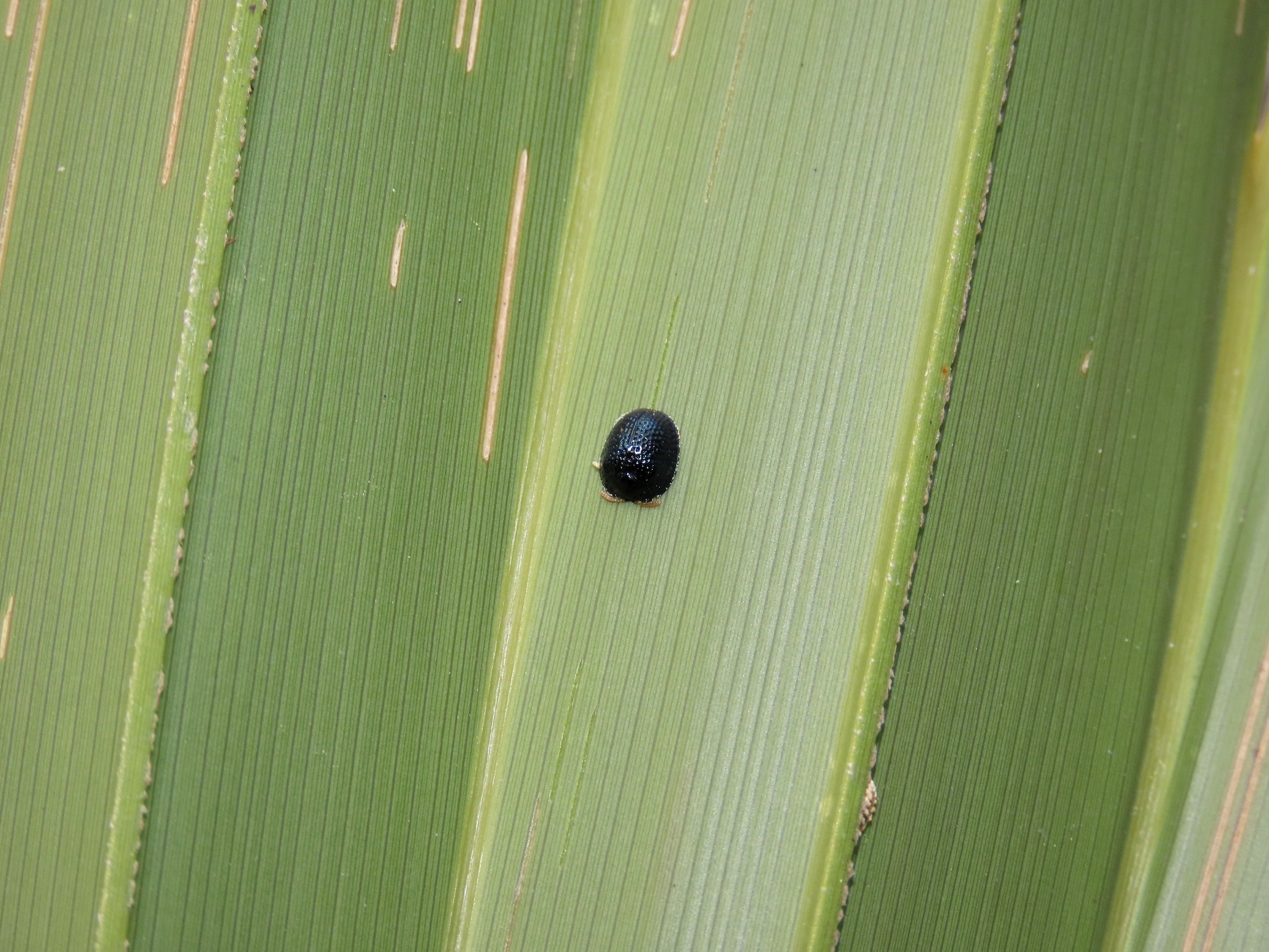
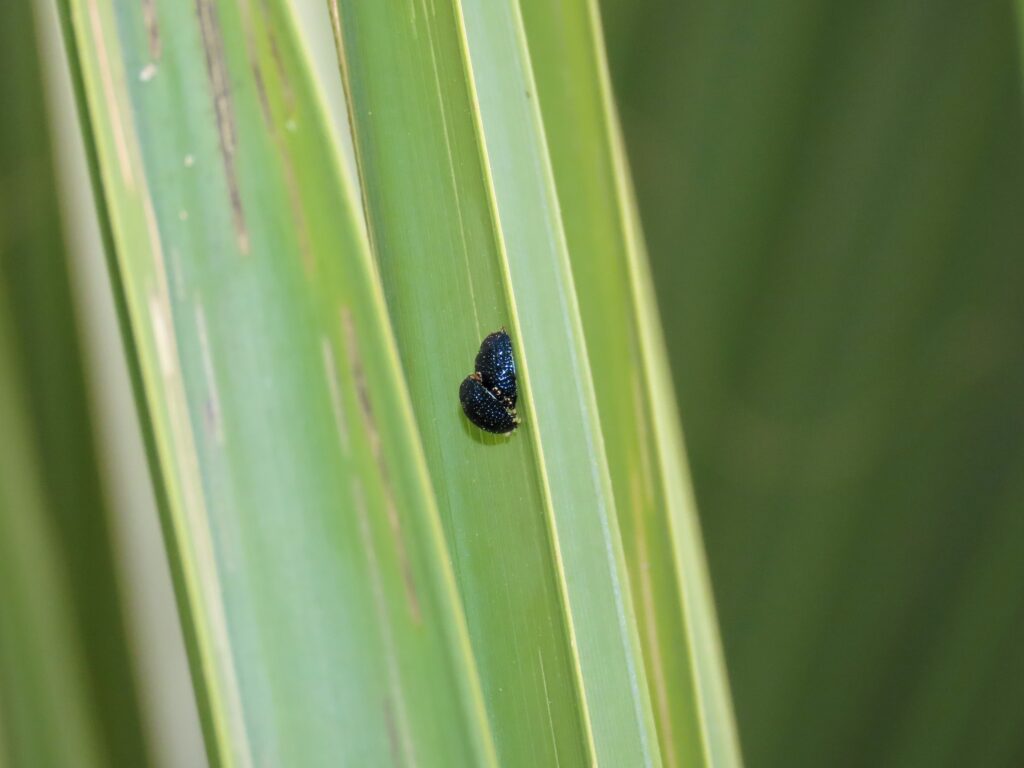
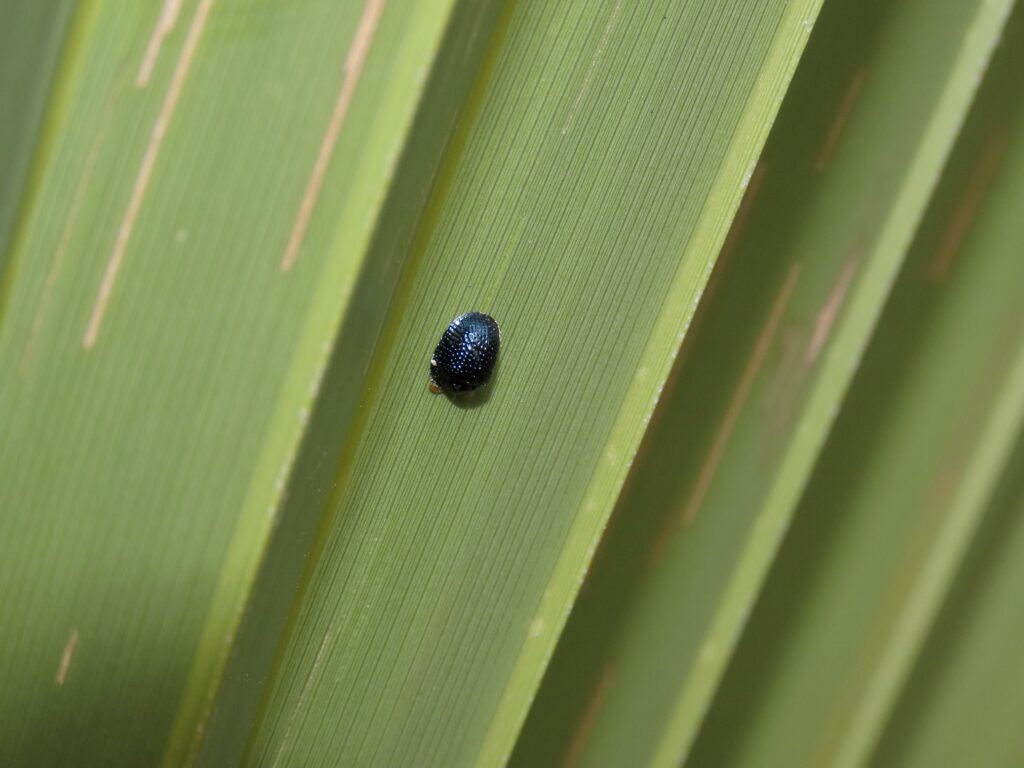
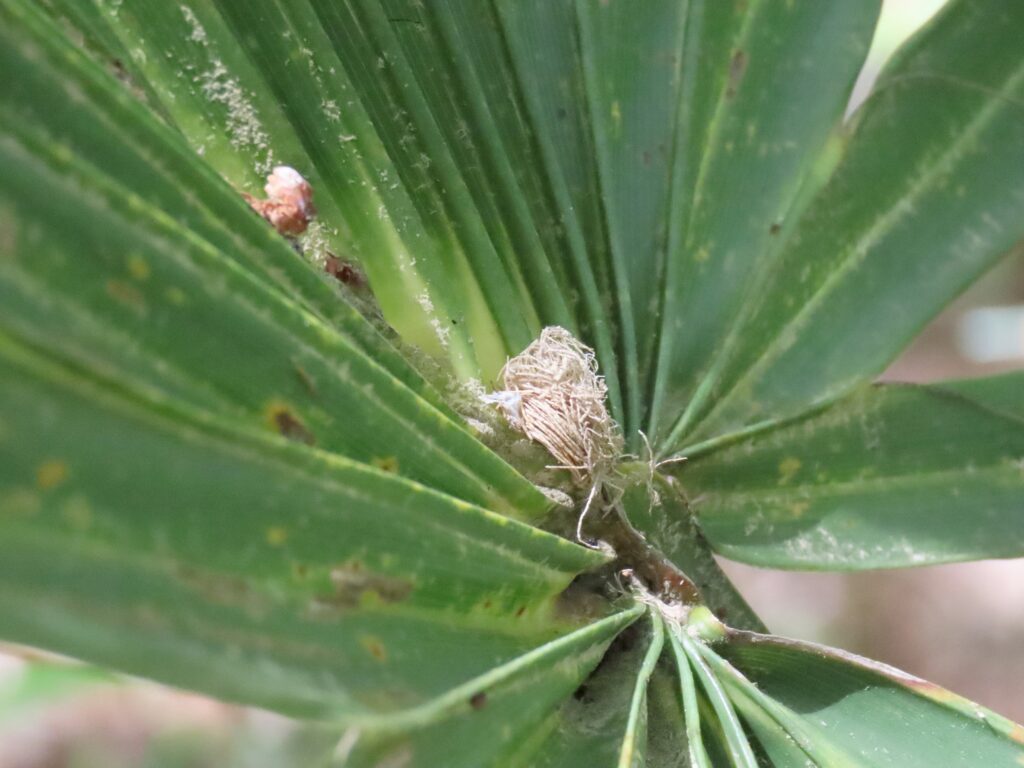
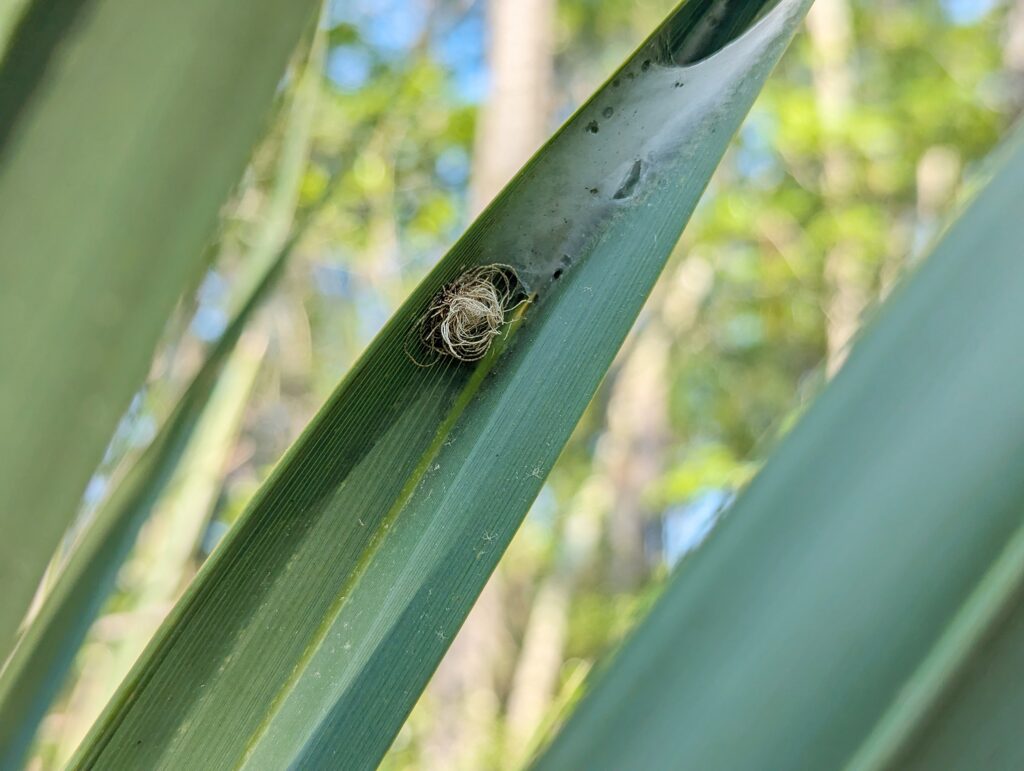
This week for Flora and Fauna Friday we have a bejeweled beetle in a thatch hat, the Palmetto Tortoise Beetle (Hemisphaerota cyanea).
The Palmetto Tortoise Beetle is found throughout the Sea Islands of South Carolina and Georgia, ranging south throughout all of Florida and west along the immediate Gulf Coast to Texas. They spend their life entirely on our native palms, including Cabbage Palmetto (Sabal palmetto), Dwarf Palmetto (S. minor), and Saw Palmetto (Serenoa repens). Upon the palms they slide up and down the fronds making their meals by scraping out the softer flesh from between the stringy fibers of the leaf. The Palmetto Tortoise Beetle is a captivating critter that deploys two fascinating defensive strategies throughout its life.
Adult beetles are a quarter-inch in length, dome-shaped, dimpled like a golf ball, and gleaming with a deep metallic blue-green that borders on black in the shade. Tiny orange antennae are their only contrasting color. The adult’s primary defense from predators is turtling up and tanking hits. Their shell is thick and its dimples provide extra structural reinforcement. Its glass-like texture and well-fit joints permit no handholds for prying predators. Even further, they have an iron grip. Their feet are modified into flat brushes. These furry feet are so finely divided that they electrically adhere at the sub-atomic level to a palmetto frond. It’s the same way lizards, like anoles and geckos, can scale plate glass, just shrunk down onto an ironclad arthropod. This makes Palmetto Tortoise Beetles functionally immune to being plucked from a palm frond by a passing bird or blown away by hurricane force winds. But as a young’un they have a far more juvenile form of defense.
Larval Palmetto Tortoise Beetles protect themselves from would-be assailants the same we protect ourselves from the sun, with a big straw hat. Only difference is our Beetle makes its hat from poop. How lovely! The first thing a baby Palmetto Tortoise Beetle does when it crawls out of its egg mass of a crib is start chowing down on a palmetto frond. The second thing it does is number two. The larvae will excrete long strands of what’s basically paper, compressed pulp pulled from the palmetto. Each strand is then glued to its back when complete and stacked atop the next. These strands twirl around into a basket that fully shields the larvae. This is called a “fecal thatch” and it helps shield the larvae from the elements and predators. Unlike the adult beetle, the larvae lack atomic Velcro feet. Instead they have sharp hooks that dig under the fibers of the palm frond, anchoring them like a roller coaster to its rail. When harassed, the larva hunkers down and waits for the predator to pass, hoping it loses its appetite as it vainly attempts to penetrate the fecal thatch. The larva carries this thatch with it throughout its life, even as an immobile pupa, until it matures, puts its childish past behind it, and dons a suit of armor instead.